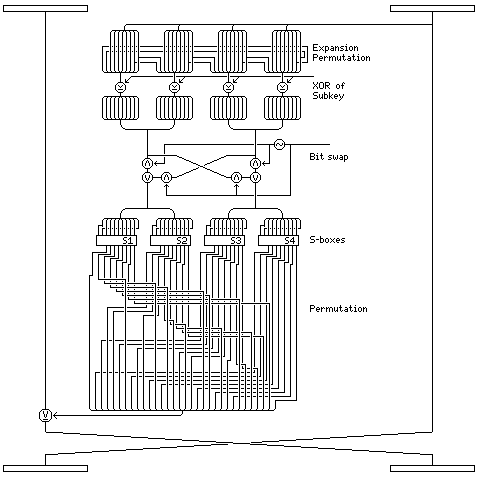
The ICE block cipher, designed by Matthew Kwan, and profiled on his web site at this location, is the one which introduced a key-dependent permutation which I felt to be quite useful, and more powerful than the key-dependent rotations which are used in some other block ciphers (and which may have a cloud of patent issues hanging over them, as became evident during the AES process).
The structure of the ICE round and f-function, as can be seen from the diagram below,

is very similar to that of DES.
The four S-boxes, each with 10 bits of input and 8 bits of output, are produced by Galois Field exponentiation. Each table consists of four bijective columns, and each column is produced by taking the eight row selection bits, shown in the diagram as the least significant, and first XORing them with a constant, and then taking the result and raising it to the seventh power, with a different modular polynomial being used for each column.
Note, however, that the least significant eight bits of the ten bits of input are the ones unmoved by the expansion permutation, rather than those bits matching the bijective segments of the S-box, as in DES.
Next
Chapter Start
Skip to Next Chapter
Table of Contents
Main Page
Home Page